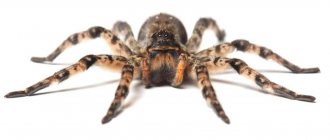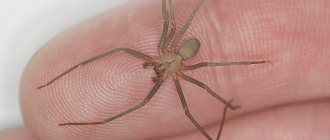Deciding to euthanize your beloved four-legged friend is extremely difficult and painful, but in some situations there is simply no other choice. Despite the lack of alternatives, only a small part of the owners give their consent immediately.
The majority tries to the last to find workarounds, citing the inhumanity and painfulness of the procedure. As a result, postponing the inevitable only prolongs the dog's suffering, while euthanasia provides a real opportunity to alleviate its suffering.
Methods of euthanasia - from carbon monoxide to decapitation
In world practice in the 21st century, animals are killed in a variety of ways:
- beheaded (decapitation);
- use electric current;
poisoned with carbon dioxide or carbon monoxide;
- air embolism is used (air is introduced into the circulatory system);
- electrocuted.
None of the listed methods can be considered humane, although in America gas is used on fur farms and to kill stray animals.
International human rights organizations consider the agents used for anesthesia to be the most suitable for euthanasia of pets.
How to euthanize a dog at home and in a veterinary clinic
After studying the main indications, as well as the pros and cons of euthanasia, all that remains is to become familiar with the actual procedure. On average it takes only 10-15 minutes.
Preparation and euthanasia procedure
Euthanasia is carried out in 2 stages. First, the dog is prepared and put into deep anesthesia to relieve pain and suppress perception of reality. Only after this she is given drugs that stop her heart and breathing.
REFERENCE!
In the presence of rabies, both drugs are administered remotely. In this case, the total waiting time increases to 30-45 minutes.
Choice of drug: tablets, injections or inhalation
Veterinarians use exclusively solutions, since the tablets do not allow for rapid absorption into the blood, take a long time to distribute throughout the nervous system and often cause side effects due to intoxication. For euthanasia, 2 types of drugs are used:
- strong sleeping pills that put you into deep anesthesia and turn off pain receptors;
- high doses of magnesium sulfate or muscle relaxants, which depress respiratory function and heartbeat.
Most often, sleeping pills and muscle relaxants are administered by injection. Inhalations are used in rare cases when there is a high risk of infection.
IMPORTANT!
Failure to introduce a sleeping pill can result in extreme physical suffering, so be sure to check the professionalism of the veterinarian you choose.
Where is better: home or clinic?
Safe administration of drugs requires certain knowledge and experience in veterinary medicine. Carrying out the procedure on your own is fraught with painful death of the quadruped due to the wrong dosage.
Only a veterinarian can guarantee the effectiveness and painlessness of euthanasia, so when answering this question, proceed from convenience. If you feel more comfortable saying goodbye to your pet at home, call a doctor directly to your home. Most veterinary clinics provide this service.
The presence of native walls will be pleasant for the four-legged one, since too many strangers and an unfamiliar environment are likely to aggravate the stress caused by pain.
How does the dog feel?
First of all, it is important to understand that animals are not characterized by reflection. They are not able to worry about their possible future and are not afraid of death in the absence of a real threat. But they feel the existing pain very well and sincerely wish for it to disappear.
After being immersed in deep anesthesia, the dog’s reactions to external stimuli and pain disappear. In this state, she does not feel anything and does not experience anxiety.
NOTE!
Anesthesia allows partial preservation of motor functions, as well as convulsive activity. Despite this, the animal still remains unconscious.
Should the owner be present?
Here everyone decides for himself. Putting a beloved friend to sleep is extremely stressful. Not every person is able to attend such an event. Despite this, veterinarians recommend staying close by if possible. The presence of the owner greatly calms the animals, and before the injection of sleeping pills, they are no less worried than you.
Service cost
The total cost depends on the weight of the animal, the need for a home visit and the procedure for cremation of the body. On average, they ask for about 1,500 rubles for small dogs, and up to 7,000 rubles for large dogs. The service of a veterinarian visiting your home costs approximately 500-1000 rubles, and general and individual cremation - from 2000 or 3500 rubles, respectively. The prices indicated are typical for Moscow and St. Petersburg.
Ditilin
Muscle relaxant with depolarizing action. In veterinary practice it is used to immobilize animals. In the Russian Federation it is used to euthanize stray cats and dogs.
Should be used only after the animal has previously been put into medicated sleep. In the Russian Federation, it is often used independently - this is an inhumane method that causes severe suffering. Stopping breathing occurs when the animal is fully conscious.
For euthanasia, you can always contact our service in Moscow!
The drugs Listenol and Arduan have a similar effect to Ditiline. They are used in the second stage of euthanasia.
If your veterinarian suggests euthanasia using Dithiline or similar products, you need to make sure that your pet is put to sleep first.
In what cases should you decide to euthanize your pet?
The existing causes of euthanasia are divided into 2 large groups: veterinary and social. The first include:
- incurable diseases (inoperable neoplasms, internal bleeding that cannot be stopped, systemic pathologies with a poor prognosis);
- poisoning with poisons that do not have an antidote (bites by exotic species of snakes);
- a large number of injuries incompatible with life;
- congenital pathologies that interfere with the normal functioning of internal organs;
- infections (rabies) that pose a serious threat to human life.
If the prognosis is favorable and there is no danger to people, the procedure is considered inhumane. The same applies to any disability provided that you are in stable good health.
IMPORTANT!
The presence of indications is confirmed after a comprehensive examination of the dog and identification of a high probability of death.
The social group of reasons includes only two factors:
- uncontrollable aggression and mental disorders that are dangerous to others;
- old age and the associated need for special care.
In the first situation, euthanasia is resorted to only when the animal cannot be trained and corrected by professionals - or attacks a child or adult. The second situation is more controversial, because here the main problem lies in the lack of money or time from the owners. Despite this, the final decision still remains with the owner.
Euthanasia of animals when it's time
One of the most painful moments is losing a beloved pet. We hope to help you make an informed decision with greater clarity. It's easy to feel guilty about euthanizing sick animals, but always remember that you took care of your pet to the best of your ability given the circumstances of your life. It was the moment that the pet was accepted into your family that allowed him to live a long and happy life, no matter how he lived it elsewhere. The circumstances of our lives push us to certain decisions - it is not a sin if the quality of life of a pet is poor. The reasons are different:
- A weakened pet that is too large, making it difficult to handle and comfortably care for?
- Is your work schedule too busy to adequately meet the needs of a weakened or sick animal?
- Does your family's financial situation prevent the expensive treatment your pet needs? All reasons are compelling for considering the issue of euthanasia.
Medical reasons to consider euthanizing an animal at home:
If your pet has a progressive or debilitating disease and you are unable to control the situation physically, mentally or financially:
- does not eat for a long time - extremely weakened;
- vomiting and nausea, the situation cannot be controlled with medications;
- his hind legs have become paralyzed and he can no longer stand up;
- suffers from incontinence due to mobility problems;
- experiences extreme pain and medications can no longer control the pain;
- has breathing problems, you don’t want to see how his further condition worsens;
- not aware of what is happening, confused, scared and disoriented;
- epilepsy, which can no longer be controlled and occurs without warning;
If your pet has behavioral problems and his aggression becomes dangerous to other animals or other people, and behavioral interventions do not work. Other valid reasons.
Euthanasia procedure
- First, the veterinarian examines the animal and discusses treatment options with the owners; if there is no hope for a positive outcome of the disease, then they begin to euthanize the animal.
- Depending on individual factors and the condition of the animal, euthanasia may take from 5 to 30 minutes.
- Euthanasia of animals consists of several stages (the stages move from one to another and can be a single intravenous injection).
- In the first part of euthanasia, the activity of the central nervous system is suppressed for the purpose of pain relief. There is no pain or adequate reaction to stimuli, but reflexes, as a rule, are preserved.
- In the second part of euthanasia of animals, inhibition of nervous activity increases until breathing and heart stops or the respiratory and cardiovascular centers are blocked.
- Usually, the breathing function stops first, and after 3 – 25 minutes the heart stops, but it can be the other way around, but after the heart stops, breathing disappears very quickly.
- Sometimes, when clinical death occurs, the agony continues for 10 - 20 minutes - while the animal does not feel anything - the brain does not work, but due to the automaticity of heart contractions, rare respiratory movements continue, and there may be convulsions. Unfortunately, it is impossible to prevent such events and influence them, because the automatic abnormal functioning of the heart does not respond to any medicinal substances. One thing is certain - animals do not experience suffering and do not feel anything at all - the brain is dead.
Cremation
After euthanasia, the animal's body is usually sent for cremation. Before the procedure, it is stored in a special freezer. Cremation can be communal or individual, in which case you will receive an urn containing the ashes.
The Ring of King Solomon agency provides professional funeral services for animals. We work quickly and painlessly, we guarantee an individual approach to each client. We will solve all inconvenient issues for you.
How is the euthanasia of a healthy animal assessed from the point of view of the law and doctors?
If we talk about legislation, then in 2022 the law “On the Responsible Treatment of Animals” was adopted. It prohibits owners from refusing to fulfill their responsibilities for maintaining an animal until it is placed in a shelter or alienated by any other legal means. Legal methods of alienation are not declared here, so the question of how painless euthanasia can be considered such a legal method remains open.
Euthanasia without medical indications or without compelling social indications is impossible. Although, in fact, the owner may insist on euthanizing an unwanted pet, but whether or not to carry out the procedure remains the choice of the veterinarian.
Antisocial behavior
The cat does not allow you to take a step - it watches you around every corner, attacks, grabs your leg with its claws and begins to tear the skin and meat, then uses its teeth, and while you are not at home, it rummages through the cabinets with enviable regularity and systematically hits everything, that can be broken. The dog constantly snaps, has already bitten hard more than once, and at every opportunity he tries to do it again and again.
The described situations are usually blamed on the owner - he did not raise the animal well. But a cat or dog does not always come into our home as a baby who can be taught good manners. Often we rescue an animal from the street, and then have to endure its antisocial behavior for many years. Such a pet cannot be corrected, so often suffering owners, experiencing a strong feeling of guilt, turn to the veterinary clinic with a request to be euthanized. And this is the right decision.











